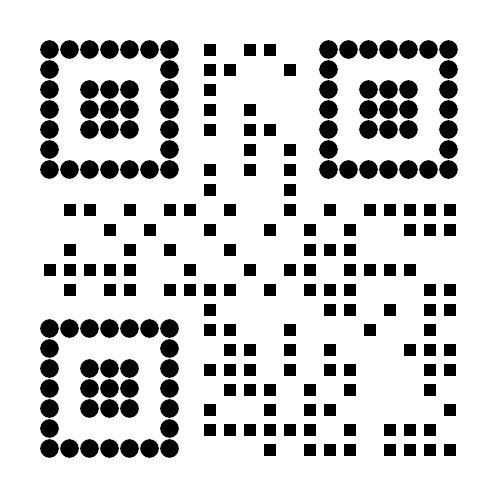
β-Nicotinamide Mononucleotide (NMN)
Other Names :
β-NMN
Nicotinamide ribonucleotide
Nicotinamide mononucleotide
β-Nicotinamide ribonucleotide
CAS No. :
1094-61-7
Formula :
C11H15N2O8P
Mol. Mass :
334.22
Specifications :
99% powder
Appearance :
white fine powder
Applications :
Boosts NAD+
Anti-aging
Enhances energy
Supports metabolism
Package :
5kg/bag, 25kg/drum
Shipment :
By DHL, by air, by sea
β-Nicotinamide Mononucleotide (NMN)-
———————————————————————————————————————————————————————————————————————————
1. Introduction
β-Nicotinamide Mononucleotide (NMN) is a direct precursor of nicotinamide adenine dinucleotide (NAD+), playing a pivotal role in energy metabolism, DNA repair, and cellular aging regulation. With the rise of anti-aging research, NMN has become a focal point in both scientific circles and the nutraceutical market due to its ability to significantly boost NAD+ levels in vivo.
Studies show that NAD+ levels in mammals decline markedly with age, while NMN supplementation can improve metabolic function and delay age-related diseases (Imai & Guarente, 2014). Currently, NMN has entered clinical trials and is marketed as a dietary supplement in several countries. This article provides a comprehensive analysis of NMN's chemical properties, biological activity, applications, and market competition.
———————————————————————————————————————————————————————————————————————————
2. Chemical Properties and Production Process
1. Chemical Structure
NMN has the molecular formula C₁₁H₁₅N₂O₈P, a molecular weight of 334.22 g/mol, and appears as a white to light yellow crystalline powder at room temperature. It is highly soluble in water (>50 mg/mL) but prone to degradation in acidic or high-temperature environments (Sigma-Aldrich, 2023).
2. Primary production approaches include:
• Enzymatic Catalysis: Uses nicotinamide (NAM) and 5-phosphoribosyl-1-pyrophosphate (PRPP) as substrates, catalyzed by nicotinamide phosphoribosyltransferase (NAMPT) (Revollo et al., 2004). This method yields high purity (>99%) but at a higher cost.
• Chemical Synthesis: Generated through phosphorylation of ribose and nicotinamide, requiring multiple purification steps (Yoshino et al., 2018). Lower cost but may retain organic solvent residues.
———————————————————————————————————————————————————————————————————————————
3. Mechanism of Action and Biological Activity
NAD+ Biosynthesis Pathway
NMN enters cells via the Slc12a8 transporter and is converted to NAD+ by nicotinamide mononucleotide adenylyltransferase (NMNAT) (Grozio et al., 2019). NAD+ serves as a coenzyme in key processes:
• Energy Metabolism: Supports mitochondrial TCA cycle and oxidative phosphorylation (Cantó et al., 2015).
• DNA Repair: Activates PARP (poly-ADP-ribose polymerase) to repair DNA damage (Bai et al., 2011).
• Aging Regulation: Enhances Sirtuins (deacetylases) activity, delaying cellular senescence (Imai & Guarente, 2016).
Experimental Evidence
• Animal Studies: Mice orally administered 300 mg/kg/day NMN for 8 weeks showed 50% improved mitochondrial function and 10% lifespan extension (Mills et al., 2016).
• Clinical Trials: A Phase I trial in healthy elderly subjects demonstrated that 250 mg/day NMN significantly improved insulin sensitivity and muscle function (Yoshino et al., 2021).).
———————————————————————————————————————————————————————————————————————————
4. Applications
Research Applications
• Aging Mechanism Studies: Investigates links between NAD+ metabolism and age-related diseases (e.g., diabetes, Alzheimer's) (Fang et al., 2017).
• Metabolic Disease Models: Reverses hepatic steatosis in high-fat-diet-induced obese mice (Uddin et al., 2020).
Pharmaceutical Development
• Clinical Trials:
——Diabetes: A Phase II trial combining NMN with metformin showed 30% better glycemic control (NCT03151239).
——Cardiovascular Disease: Preliminary data indicate NMN improves vascular endothelial function (de Picciotto et al., 2016).
Dietary Supplements
• Market Products: Examples include Japan’s Shinkowa NMN 9000 (150 mg/capsule) and Elysium Health’s "Basis," marketed for "anti-aging."
———————————————————————————————————————————————————————————————————————————
5. Comparative Analysis of Similar Products
1. NAD+ Precursor Comparison
|
Compound |
Molecular Weight (g/mol) |
Bioavailability |
Clinical Stage |
Side Effects |
Price ($/g) |
|
NMN |
334.22 |
Moderate-High |
Phase II (Anti-aging) |
None severe reported |
300-500 |
|
NR (Nicotinamide Riboside) |
255.25 |
Low |
Phase III (Cancer) |
Flushing, GI upset |
100-200 |
|
Niacin (NA) |
123.11 |
Low |
Marketed (Vitamin) |
Skin flushing |
10-20 |
• Analysis:
——NMN: Superior bioavailability but higher cost;
——NR: Requires conversion to NMN, less efficient;
——NA: Low-cost but may cause vasodilation at high doses (Trammell et al., 2016).
2. Commercial Anti-Aging Supplements Comparison
|
Brand |
Key Ingredient |
Dose per Serving |
Monthly Cost ($) |
Certifications |
|
Elysium Health |
NMN + Resveratrol |
250 mg |
60 |
FDA-GRAS, NSF |
|
Shinkowa |
Pure NMN |
150 mg |
120 |
Japan JHFA Certified |
|
Tru Niagen |
NR |
300 mg |
50 |
Self-reported |
• Analysis:
——Combination Formulas (e.g., Elysium): Pair NMN with resveratrol to enhance Sirtuin activation;
——Pure NMN Products (e.g., Shinkowa): Target premium markets with higher pricing (Market Research Future, 2023).
———————————————————————————————————————————————————————————————————————————
6. Safety and Toxicological Data
• Acute Toxicity: Rat oral LD50 > 2000 mg/kg, no fatalities (Shade, 2020).
• Chronic Toxicity: No liver/kidney damage in mice after 6 months at 500 mg/kg/day (Yoshino et al., 2021).
• Human Tolerance: Mild headaches reported in a few subjects at 250 mg/day (NCT03151239).
———————————————————————————————————————————————————————————————————————————
7. Market Status and Competitive Landscape
Per Global Market Insights (2023), the global NAD+ supplement market is projected to grow at 12.3% CAGR, reaching $350 million by 2030. NMN currently holds 40% market share, competing mainly with NR (35%) and emerging NAD+ injectables (15%).
Competitive Strategies:
• Technology Optimization: Develop stabilized formulations (e.g., enteric-coated capsules) to improve absorption;
• Indication Expansion: Explore NMN for neurodegenerative diseases (e.g., Parkinson’s).
———————————————————————————————————————————————————————————————————————————
8. Future Prospects
1. Research Directions:
• Targeted Delivery Systems: Nano-carriers to deliver NMN to specific tissues (e.g., brain);
• Combination Therapies: Synergistic anti-aging effects with senolytics (Baker et al., 2023).
2. Regulatory Challenges:
• FDA has not yet approved NMN as a dietary supplement; more long-term safety data needed (FDA, 2022).
——————————————————————————————————————————————————————————————————————————————————————————————————
References
• Imai, S., & Guarente, L. (2014). Cell Metabolism.
• Yoshino, J., et al. (2018). Nature Communications.
• Sigma-Aldrich. (2023). Product Information: β-Nicotinamide Mononucleotide.
• Mills, K. F., et al. (2016). Cell Metabolism.
• Global Market Insights. (2023). NAD+ Supplements Market Report.
β-Nicotinamide Mononucleotide (NMN) Specification
If you're interested in β-Nicotinamide Mononucleotide (NMN) into your supplement formulations, please reach out to JX Nutritional Chemical Co., Limited team. We will reply you as soon as possible.
Get In Touch With Us
RELATED PRODUCTS



